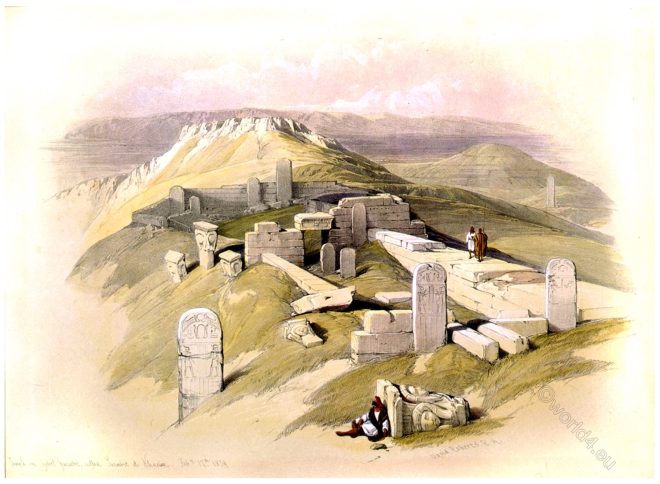The beauty of the submarine scenery is perhaps nowhere greater than in moderate depth.
Tag: Travel
Historical travel literature of the 18th and 19th centuries. The discovery of the world
The Entrance to the Church of the Holy Sepulchre at Jerusalem.
This Vignette represents the facade of the Church of the Holy Sepulchre, which is built over the spot where our Lord was presumed to have been buried.
An Ancient Egyptian Temple, on Gebel Garabe. Sinai, Egypt.
A view of the ancient Egyptian Temple of Hathor at Gebel Garabe, usually known as Serabit el-Khadim, in the Sinai, Egypt.
Mount Hor, from the cliffs encircling the ancient city of Petra.
The view was magnificent, commanding El Ghor and the Wady Arabah, while above him towered the naked majesty of Mount Hor.
View of Petra from the top of the Nabataean Theatre.
One which most directly meets the eye on entering the City of Petra from the eastward, is the Theatre.
The Citadel of Jerusalem and the Tower of David.
The citadel of Jerusalem, with the Tower of David, lies on the north-western part of Sion, to the south of the Jaffa Gate.
The Necropolis of Petra. The tombs of the chief Cemetery.
In the valley which conducts to Petra, and which lies outside the “Chasm,” is the chief Cemetery.
Men sitting to smoke by a ravine at Petra, Jordan.
This view is taken from the Theatre, and represents the Excavations in the opposite cliffs; and the continuation of the chief eastern entrance to the City.
The Perfection and beauty of the coconut palm at Sri Lanka.
In no part of the world does the coconut palm attain such perfection and beauty as in Ceylon
Excavations at the Eastern End of the Valley, Petra.
The architects of Petra had evidently a strong sense of beauty. The City, in its pomp and animation, have formed a combination altogether unrivalled.










